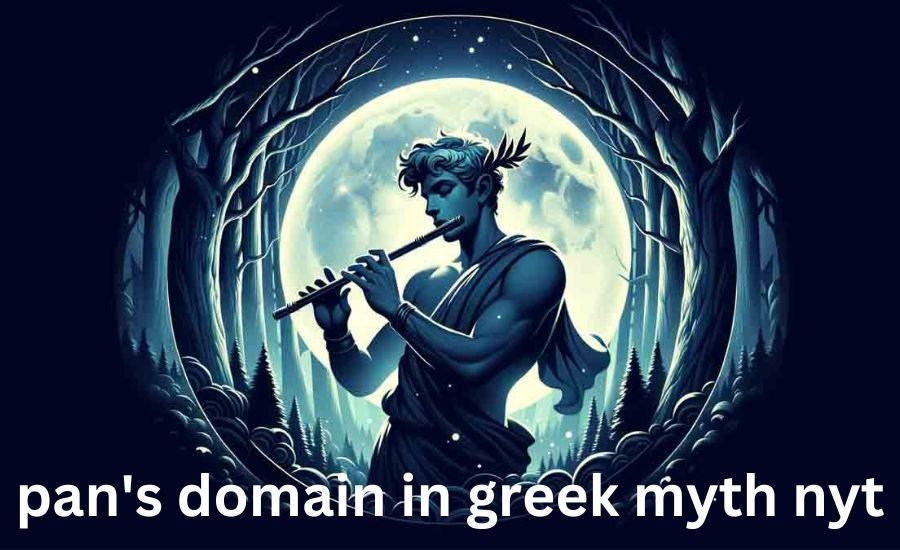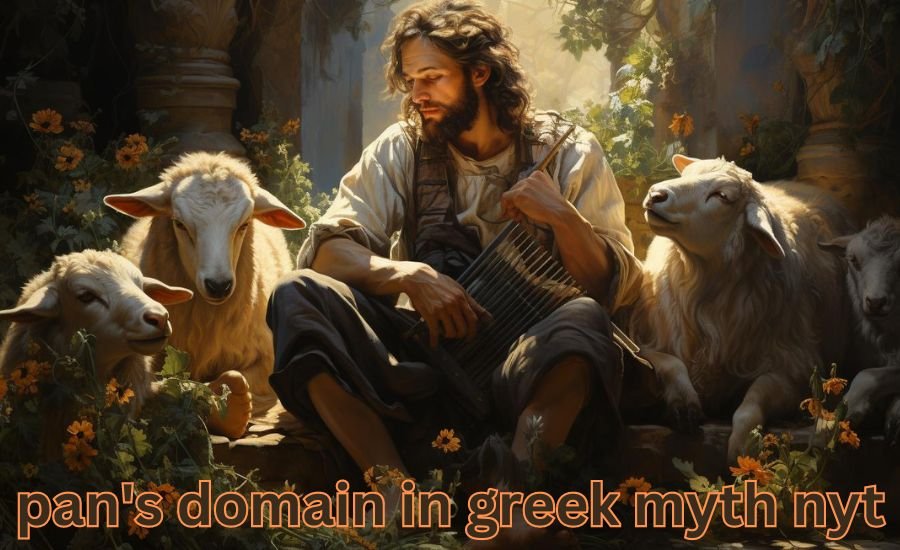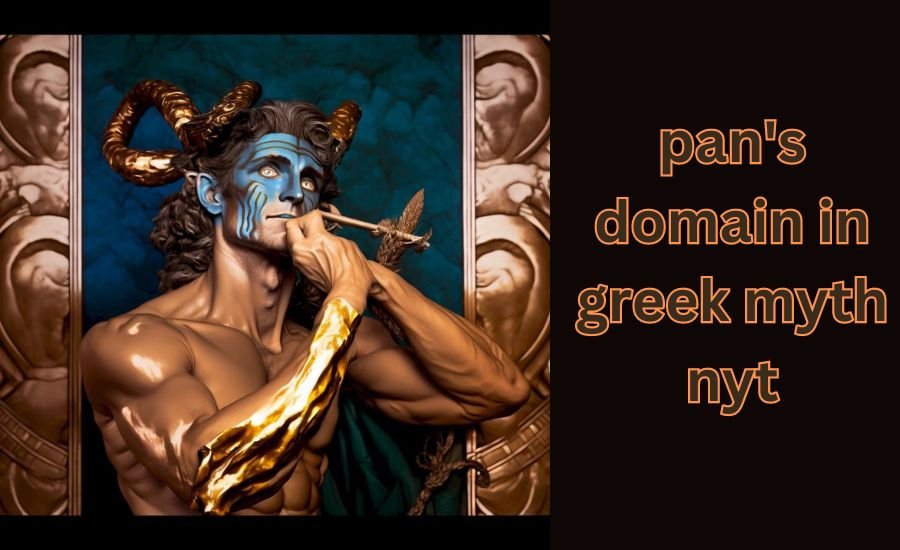In the enchanting world of Greek mythology, few figures capture the imagination quite like the Greek god Pan. Known ast he god of the wild, Pan embodies the spirit of nature, fertility, and the rustic life. This article delves into Pan’s domain in Greek myth, especially his significance in Arcadia, and how his legacy resonates in contemporary discussions, including those found in the New York Times (NYT).
Understanding Pan: The Goat-Legged God
Pan is often depicted as a goat-legged god in mythology, featuring a human upper body and the legs, horns, and beard of a goat. This distinctive appearance reflects his deep connection to the wilderness, symbolizing the untamed aspects of nature. As a wilderness deity, Pan governs the forests, mountains, and fields, representing both the beauty and chaos of the natural world.
Origins and Birth of Pan
The origins of Pan are steeped in mystery. Some myths suggest he is the son of Hermes and a nymph, while others claim he is the offspring of Zeus or Dionysus. Regardless of his parentage, Pan’s arrival brought joy to the gods. In one tale, his birth caused such delight that he was presented to the Olympians, where his playful and wild spirit won the hearts of many.
Arcadia: Pan’s Sacred Domain
Arcadia, located in the central Peloponnese, serves as Pan’s sacred domain. This idyllic region represents an idealized pastoral life, free from the complexities of urban civilization. In Arcadia mythology, the land is portrayed as a paradise where humans and nature coexist harmoniously.
The Arcadian Landscape in Myths
The Arcadian landscape is characterized by its rugged terrain, dense forests, and lush meadows. This environment is the backdrop for numerous myths that feature Pan. It is said that in Arcadia, wild animals roam freely, embodying the essence of the untamed spirit that Pan represents.
Pan’s Attributes: The Flute, Fertility, and Nature

The Symbolism of Pan’s Flute Music
One of Pan’s most notable attributes is the pan flute, also known as the syrinx. According to myth, Pan crafted this beautiful instrument from reeds to mourn the nymph Syrinx, who transformed into reeds to escape his advances. This story underscores Pan’s association with Pan and nature, illustrating how he channels the natural world into his music. The haunting melodies of his flute resonate through the woods, captivating all who hear it.
Pan and Fertility Rites
Pan is often linked to fertility rites and the rejuvenation of nature. As a protector of shepherds and their flocks, Pan symbolizes the fertility of the land and the abundance of agricultural life. The ancient Greek rural gods were revered for ensuring a bountiful harvest, and Pan played a vital role in these beliefs. Celebrations and rituals dedicated to Pan often coincided with the arrival of spring, marking the return of life and growth.
Pan and Nymphs: Companions of the Wild
Pan is frequently depicted alongside nymphs, beautiful spirits of nature who embody the life force of the wilderness. Their interactions often highlight the playful and mischievous nature of Pan, as he is known for his pursuit of these elusive beings. The relationship between Pan and nymphs reflects the balance of beauty and chaos in the natural world, emphasizing the interconnectedness of all living things.
The Influence of Pan in Literature and Culture

Pan’s legacy extends beyond mythology into literature and culture. He appears in various works that explore themes of nature, wilderness, and humanity’s relationship with the environment. From classical literature to modern interpretations, Pan’s character serves as a reminder of the primal connection we have with the natural world.
Pan in Modern Discussions
In recent years, discussions surrounding Pan have gained renewed interest, especially in environmental contexts. Articles in prominent publications like the New York Times explore his role as a symbol of nature’s untamed spirit. Environmental movements often invoke Pan’s image to emphasize the need for preservation and respect for the natural world. His wild, free-spirited essence is celebrated as a reminder of the beauty and fragility of our ecosystems.
Pan’s Worship in Arcadia
The Rituals and Temples Dedicated to Pan
In ancient Arcadia, Pan was widely worshipped. Temples and shrines dedicated to him were often located in remote, wild areas, reflecting his connection to nature. Local communities would conduct rituals to honor Pan, seeking his favor for successful hunts and abundant harvests. The worship of Pan was deeply ingrained in the cultural fabric of Arcadia, showcasing the significance of this wilderness deity.
Pan and Dionysus: The Celebration of Life
Pan’s relationship with Dionysus, the god of wine and festivity, further emphasizes his role in Arcadian mythology. Together, they represent the joy of life, the pleasures of the earth, and the celebration of nature’s bounty. Festivals held in their honor often featured music, dance, and revelry, uniting communities in a shared appreciation for the wild and untamed aspects of existence.
The Psychological Aspect of Pan

Pan as a Representation of the Unconscious Mind
The psychological dimensions of Pan’s character are notable as well. Carl Jung, a renowned psychologist, identified Pan as a representation of the “wild man” archetype, symbolizing the primal instincts and unconscious desires within us all. This aspect of Pan reminds us of the inherent wildness that exists in human nature and the importance of acknowledging and embracing these instincts.
The Fear and Awe of the Wilderness
Pan’s ability to incite “panic” in those who encounter him highlights the duality of nature: it can inspire both fear and awe. This reflects our complex relationship with the wilderness, where beauty and danger coexist. Understanding this duality is crucial in fostering a respectful and harmonious relationship with the natural world.
Conclusion
Pan’s domain in Greek myth continues to captivate audiences, reminding us of the primal connection between humanity and the natural world. His character embodies the wild, untamed aspects of existence, serving as a powerful symbol for contemporary discussions about the environment. In a time when nature is increasingly threatened, Pan’s legacy encourages us to preserve the wild places that are essential to our planet and our well-being.
By exploring Pan’s domain in Greek myth, we not only gain insight into ancient beliefs but also reflect on the modern world’s ongoing relationship with nature. The story of Pan serves as a testament to the enduring power of mythology and its ability to resonate with the core of the human experience. Through understanding Pan, we can appreciate the wild beauty of the world around us and strive to protect it for future generations.
Read more: Hura-watch-net-quest-of-the-eternal-realm


